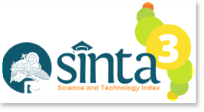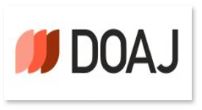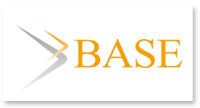OPTIMALISASI PENENTUAN JURUSAN MELALUI PERBANDINGAN METODE MOORA-WASPAS
DOI:
https://doi.org/10.30656/jsii.v8i2.3610Abstract
Labor absorption from graduates of Vocational High Schools is lower than graduates of other education levels. It can see from the high unemployment rate of Vocational High Schools graduates of 13.55%. One way to improve vocational high school graduates' competence is by choosing the right major. Choosing the right major can help improve students' skill competencies and comfort during the teaching and learning process. The decision to choose a major that students currently make is based on the influence of others or based on the most in-demand majors. It will cause a mismatch in the placement of majors with the abilities of prospective students so that the material given during class will be difficult to accept. To help decision-making, the results of the recommendations from the decision support system (DSS) can use as a reference for selecting majors for prospective students. The data to be tested consists of seven criteria with six alternatives. The data is analyzed using the Multi-Objective Optimization on The Basic of Ratio Analysis (MOORA) method and the Weight Aggregated Sum Product Assessment (WASPAS). The test results from both methods provide the same recommendation, namely the selection of the Electrical Power Installation Engineering Department as the highest preference based on the talents and interests of prospective students from on test data. When viewed from the time required for calculation analysis, the WASPS method requires faster than the MOORA method. The accuracy of the two methods used gave the same results, namely 50%. So it can conclude that the WASPAS and MOORA methods are overall suitable and can provide solutions to problems in assessing and evaluating majors by the talents and interests of prospective students.
Downloads
Published
Issue
Section
License
- This work is licensed under a Creative Commons Attribution-ShareAlike 4.0 International License.
-
Author(s)' Warranties
The author warrants that the article is original, written by stated author(s), has not been published before, contains no unlawful statements, does not infringe the rights of others, is subject to copyright that is vested exclusively in the author and free of any third party rights, and that any necessary written permissions to quote from other sources have been obtained by the author(s).
- Information
- Notice about change in the copyright policy of the journal 'Jurnal Sistem Informasi (JSiI)' : "From Vol 1, onwards the copyright of the article published in the journal 'Jurnal Sistem Informasi' will be retained by the author"







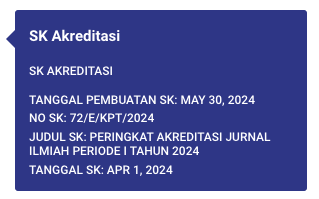




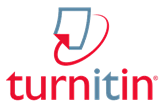
.jpg)

